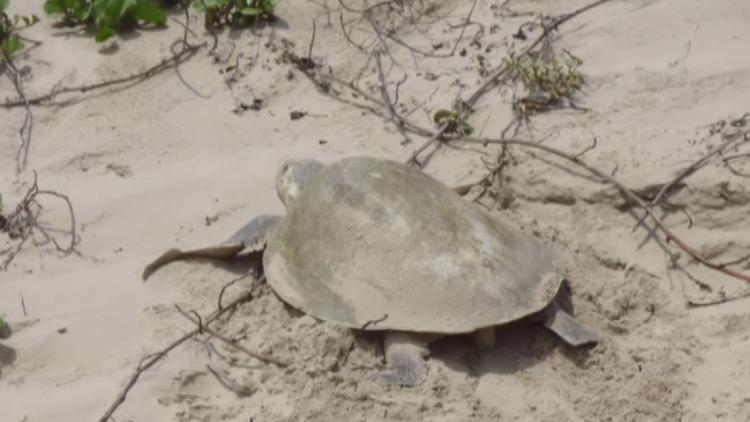CORPUS CHRISTI, Texas — The number of endangered sea turtle nests found on the Texas coast so far in 2023 is in the hundreds.
Donna Shaver, with the Padre Island National Seashore (PINS), said 222 Kemp's ridley nests have been found as of June 14. They are the most endangered turtle species in the world, according to the National Parks Service (NPS).
There are an estimated 5,500 females nesting in Mexico annually and about 55 females nesting in Texas annually, according to the NPS. Shaver has spent the last 40 years helping with conservation efforts, which include a program to increase nesting at PINS and form a secondary nesting colony of this species here as a safeguard against extinction.
Most nests this year, 134 of them, were found on North Padre Island. 129 were found at the PINS. They have also been found in the following locations:
- 2 - Galveston Island
- 1 - Brazoria County, N. of Surfside
- 3 - Surfside Beach
- 1 - Matagorda Peninsula
- 4 - San Jose Island
- 10 - Mustang Island
- 60 - South Padre Island
- 7 - Boca Chica Beach
One loggerhead turtle nest has also been found at the PINS this year, as well as three green turtle nests. One other green turtle nest was found on South Padre Island.
Turtle patrols have been busy so far along PINS spotting the nests, but if you venture out, be on the lookout for yellow or blue flags, which indicate turtles have been nesting in the area.
"They will look for the inbound tracks and they will look for the outbound tracks and where the inbound tracks intersect with the outbound tracks, they’ll place a yellow flag,” said Padre Island National Seashore Public Information Officer Kelly Taylor.
Yellow flags help teams mark where a mother has turned to return to the water or to find a better nesting location.
"That allows them to excavate or basically dig out the nest to remove the eggs,” she said. “When they're done, they will fill the nest cavity back in after having removed the eggs and they'll put a blue flag there to indicate that's where the nest was."
Those excavated eggs are taken to a lab at the seashore where they will incubate for roughly 45-60 days before hatching.
If you see a nesting turtle on the beach, make sure to call 1-866-TURTLE-5.



